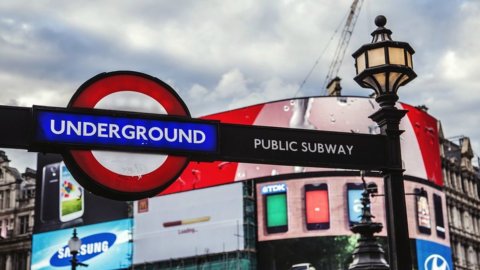On 10 January 1863, exactly 157 years ago, it was inaugurated the first line of the London Underground, one of the most famous urban infrastructures in the world. Along with double-decker buses, black cabs and red telephone boxes, the London Underground has become over time one of the most recognizable symbols of the British capital. Today it carries over a billion people a year and its white, red and blue sign reads "underground” stands out on millions of T-shirts, posters and hats scattered around the planet.
London was the first underground subway in the world: the debut section was between Paddington Road (then Bishop Road) and Farringdon Street, while the first real line was the Circle, followed 5 years later by the first section of the District, between South Kensington and Westminster.
For almost thirty years, “The tube” – as the Londoners call it – was powered exclusively by steam. The first electrified section dates back to 1890, while the Central line (the longest, which connects the north-east of the city to the west) saw the light only with the new century, in 1900.
The word "Underground” appeared for the first time at the station entrances in 1908 and three years later – at the Earl's Court stop – they also made their debut the escalators. The first automatic doors on trains they arrived instead in 1929.
During the two world wars, the London Underground was used as air-raid shelter, allowing thousands of people to save themselves from German bombing. But it was right at the entrance to a tube station, that of Bethnal Green, that one of the bloodiest tragedies in London's history took place: on March 3, 1943, while a crowd of people was heading towards the entrance - having heard little first the alarm siren – an anti-aircraft battery fired a shot, unleashing panic on the stairs. 172 people died of crushing, including 68 children.
The most serious accident instead it occurred on 28 February 1975, when a train, having reached the Moorgate terminus, failed to brake and crashed into the terminal wall. On that occasion the victims were 43 and 75 wounded.
Two other tragedies date back to 1987 and 2005: in the first case it was a Fire broke out in King's Cross station (31 dead), while 15 years ago the metro was the scene of a terrorist attack which cost the lives of 52 people.





